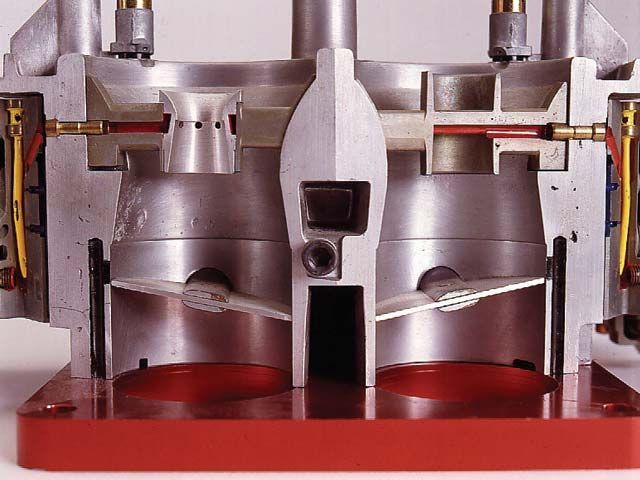
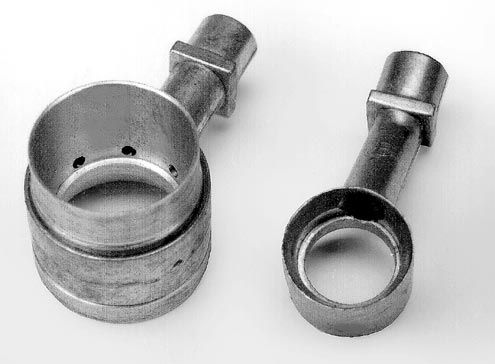
http://www.cartechbooks.com/techtips/holley-carburetor-operating-principles/
left annular booster multi port fuel distribution more restrictive to air flow
right strait booster, less restrictive to air flow but single fuel distribution point limiting atomization
the larger left annular booster pictured above has multi port fuel distribution, this booster design restricts avaliable air flow area, through the venturie or throttle bore, so not only is the air speed increased , the fuel atomization efficiency tends to increase, but at the cost of some over all flow restriction
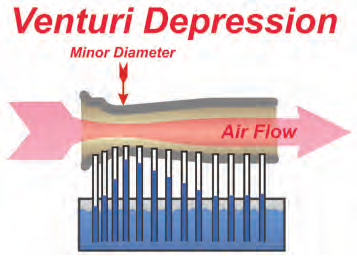
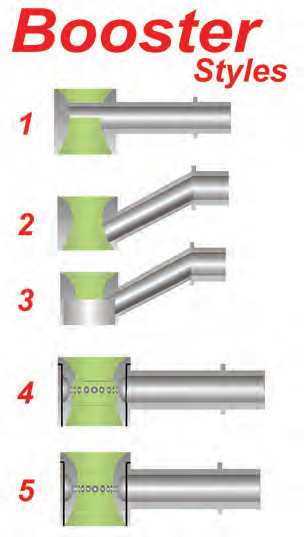
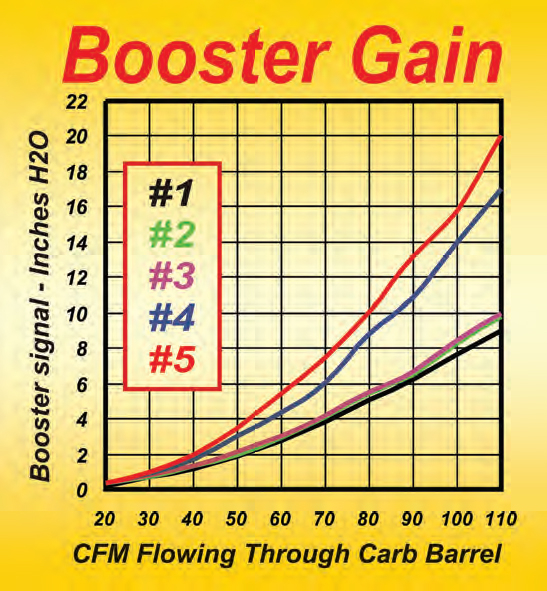
GET A FUEL PRESSURE GAUGE AND MEASURE DON,T GUESS
how can you possibly set up your fuel system unless you know the pressure and flow rates required and what currently exist's

READ LINKS
http://garage.grumpysperformance.com/index.php?threads/setting-up-your-fuel-system.211/
http://garage.grumpysperformance.com/index.php?threads/fuel-pressure-regulators.635/
http://garage.grumpysperformance.com/index.php?threads/how-big-a-fuel-pump-do-you-need.1939/
http://garage.grumpysperformance.co...ss-fuel-pressure-regulators.12776/#post-65998
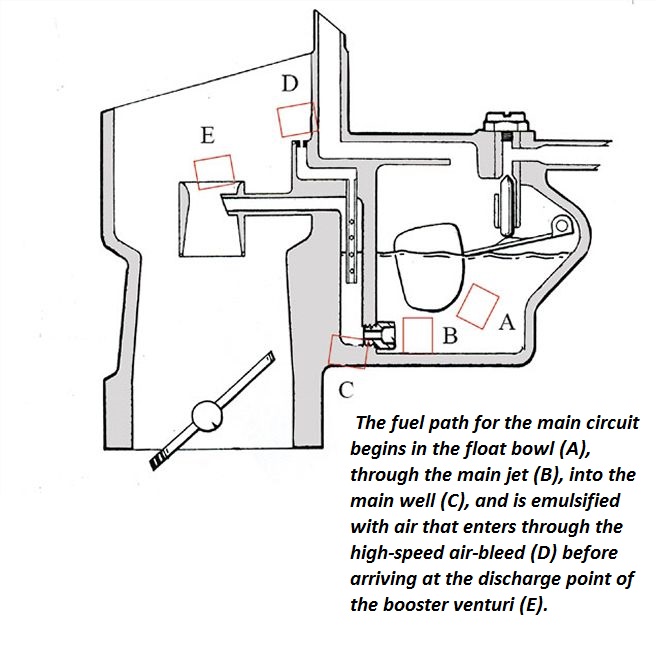
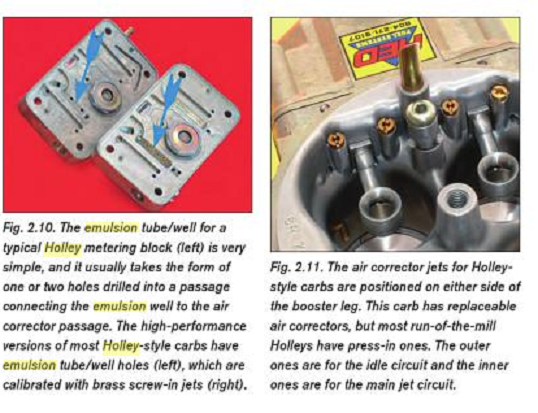
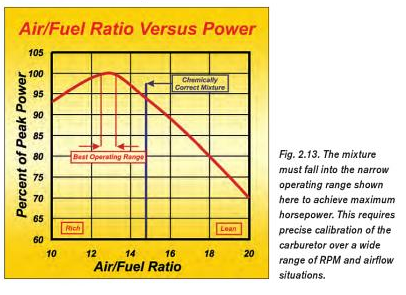
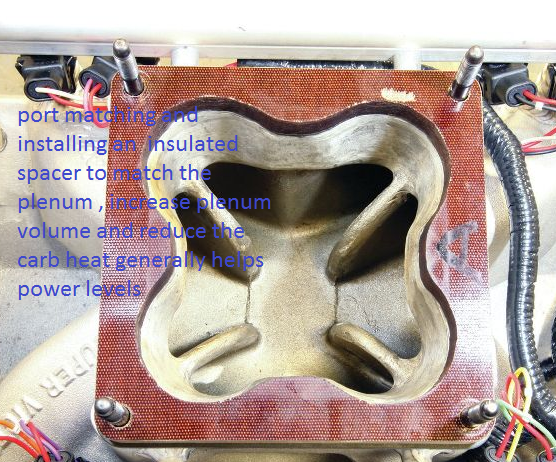
the short version,of how a carb works,is that air velocity in the carb is what allows fuel to flow from the fuel wells into the venturi area making the carb function as designed and it takes a minimal pressure and velocity difference to allow the carb to function efficiently.
An engine, is basically an air pump, functioning on rapid increases in cylinder pressure.
boosters only flow fuel when theres a significant difference in vacuum or air pressure caused by the engine actually running, and that the bog, or momentary lean condition is covered by the accelerator pump shot, the accelerator pump cam can be changed and the diaphragm should be the new green version as the older BLACK versions are subject to damage from ethanol in fuel
Since the engine will flow a certain amount of air volume at a given RPM, use of a larger carburetor will cause a reduction in air velocity across the carbs venturi,s and a smaller carb tends to increase air velocity thus causing either a reduction in or increase in negative pressure in the venturies the airs drawn thru.
Too large a carburetor will have a reduced signal due to slower air velocity and tend to run LEAN, as its less able to instantly draw fuel thru the boosters, to small a carb restricts air flow near peak rpms..!
annular boosters usually generate a higher vacume signal strength from increased air velocity due to their being more restrictive than the down leg boosters, in an identical throttle bore size, allowing the use of larger carburetors and/or larger cams while still retaining good metering stability. This higher signal strength however requires smaller jetting than an otherwise identical down leg booster carburetor .
keep in mind the internal passages flow fuel in these boosters ,the boosters do on occasion get clogged and need a careful cleaning, as Ive seen many carbs with one or both booster with restricted fuel flow.
Annular boosters promote better atomization of fuel because they have many holes for the fuel to flow from, rather than just one big one like in the down leg boosters. This promotes better throttle response, fuel economy, and much better mixture distribution, especially at lower engine speeds , but it will required matching changes in jets and power valves as the annular booster tend to make the carb run richer if no other matching changes are made to compensate
The main tradeoff with annular boosters is that they are a bigger obstruction to airflow than the down leg boosters, thus lowering the effective cfm of the carburetor, all other variables being equal.
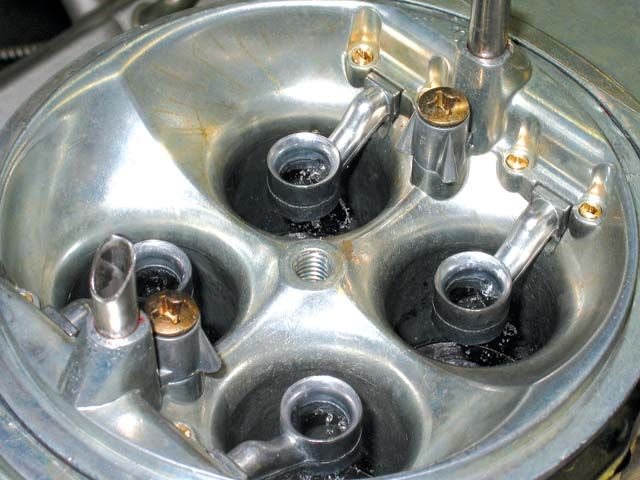
strait leg and down leg boosters projected straight out from the upper portion of the carburetor barrel above the venturi. Later, down leg boosters were used to place the trailing end of the booster closer to the highest velocity point in the venturi. Both of these boosters employ a single fuel discharge point, relying on the shearing effect of high-velocity air moving past the booster to atomize the fuel., this works well at wide open throttle on larger displacement car engines at higher rpms as its less restrictive to air flow
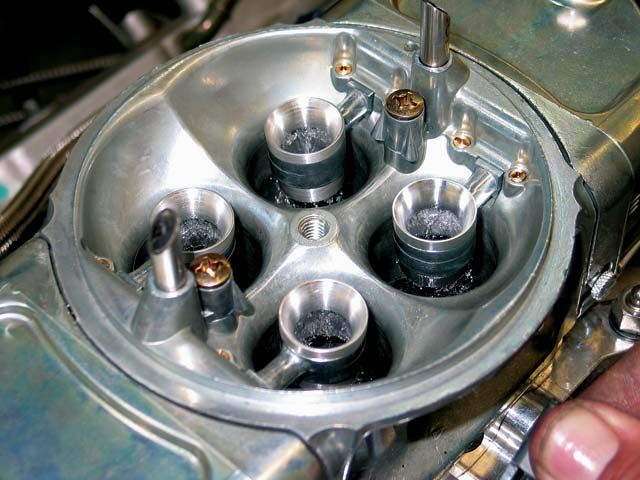
the annular booster, which is slightly larger in diameter than the down leg and employs a series of small discharge holes drilled into the inside circumference of the booster to improve fuel atomization. and tends to be a bit more responsive at mid throttle , on many street cars annular boosters and the correct power valve and accelerator pump cam can make the carb noticeably more responsive than it came out of the box
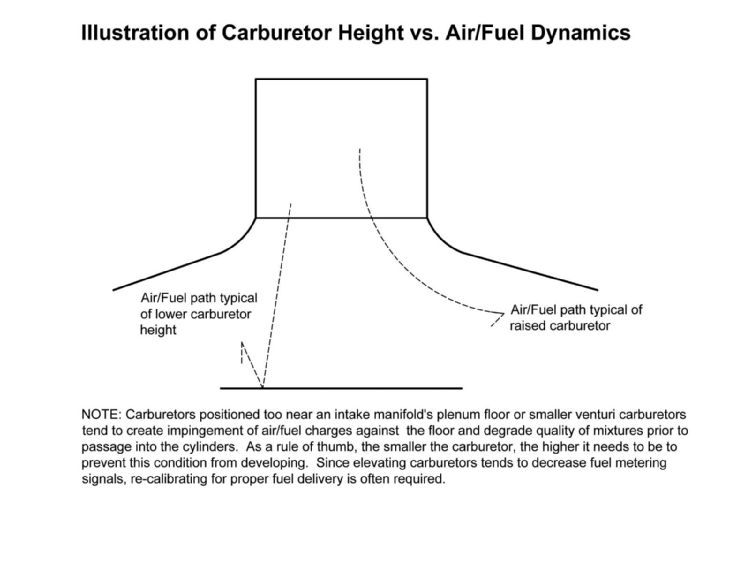

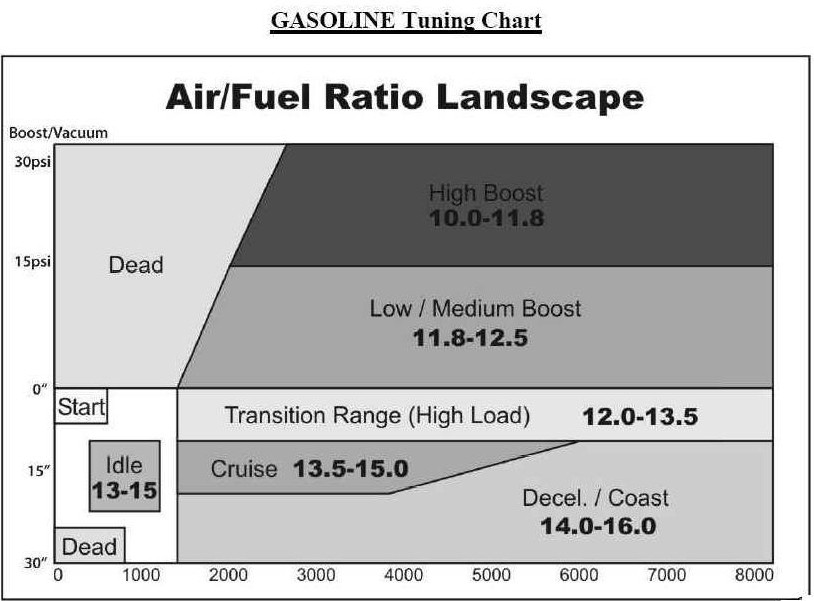

related info, you really should read thru if you intend to know how to tune your engine
http://users.erols.com/srweiss/calcdchg.htm
a carb flows less if the plenum vacuum is less
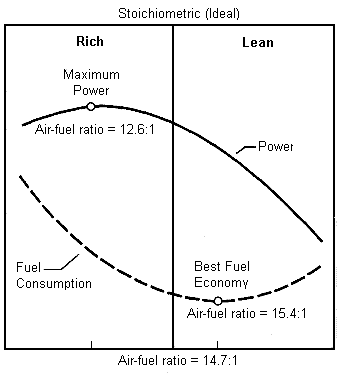
blue accelerator pump diaphragms are alcohol tolerant
they come in 30 cc and 50cc sizes
obviously you need to select the size you require
http://garage.grumpysperformance.com/index.php?threads/holley-accelerator-pumps-cams.1790/#post-4544
http://garage.grumpysperformance.com/index.php?threads/holley-accelerator-pumps-cams.1790/
http://garage.grumpysperformance.com/index.php?threads/holley-carb-power-valves.1639/
http://garage.grumpysperformance.com/index.php?threads/holley-jet-chart-size-and-area-of-jets.15869/
http://garage.grumpysperformance.com/index.php?threads/holley-annular-vs-down-leg-boosters.5229/
http://garage.grumpysperformance.com/index.php?threads/carb-tuning-info-and-links.109/#post-44435
https://www.speedwaymotors.com/Holley-135-10-30cc-Accelerator-Pump-Diaphragm-Alcohol,9043.html?sku=42713510&msclkid=abed1e09704516c905e17e6b4bff9f84&utm_source=bing&utm_medium=cpc&utm_campaign=SMI - Shopping (CSE) (Bing)&utm_term=4577404347376845&utm_content=All Products (Feb28_2020)
https://www.speedwaymotors.com/Holley-135-9-50cc-Accelerator-Pump-Diaphragm-Alcohol,8832.html
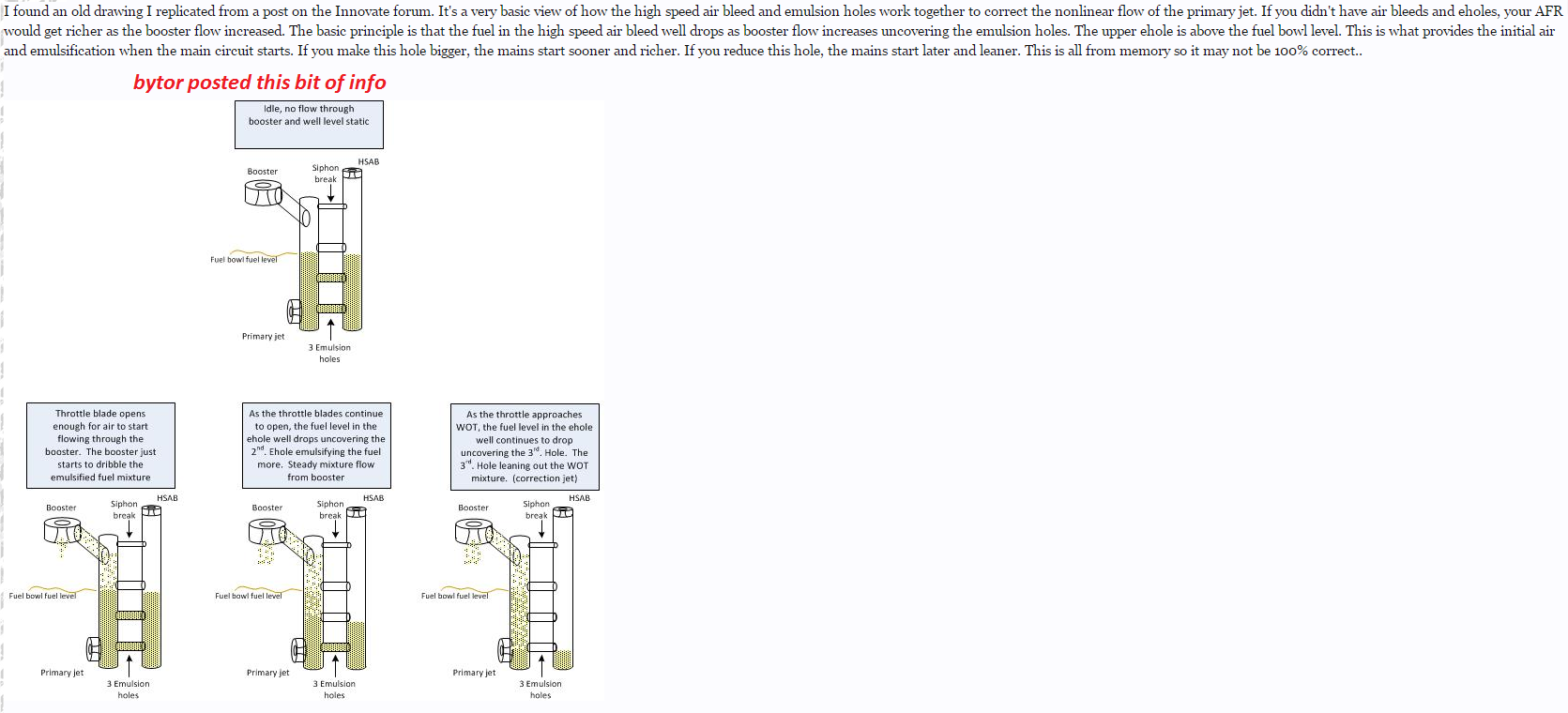
http://www.carcraft.com/techarticles/11 ... ewall.html
http://www.carcraft.com/techarticles/se ... index.html
viewtopic.php?f=55&t=1639
viewtopic.php?f=55&t=1790
http://www.chevyhiperformance.com/techa ... 0_cfm.html
http://gottafishcarburetors.com/CFM Formula.html
http://wallaceracing.com/intakecfm.php
viewtopic.php?f=55&t=8126&p=28205#p28205
viewtopic.php?f=55&t=635
viewtopic.php?f=55&t=109
viewtopic.php?f=55&t=211
viewtopic.php?f=44&t=773
viewtopic.php?f=70&t=202
viewtopic.php?f=55&t=1961
viewtopic.php?f=70&t=4683
viewtopic.php?f=57&t=4701
Last edited by a moderator:
